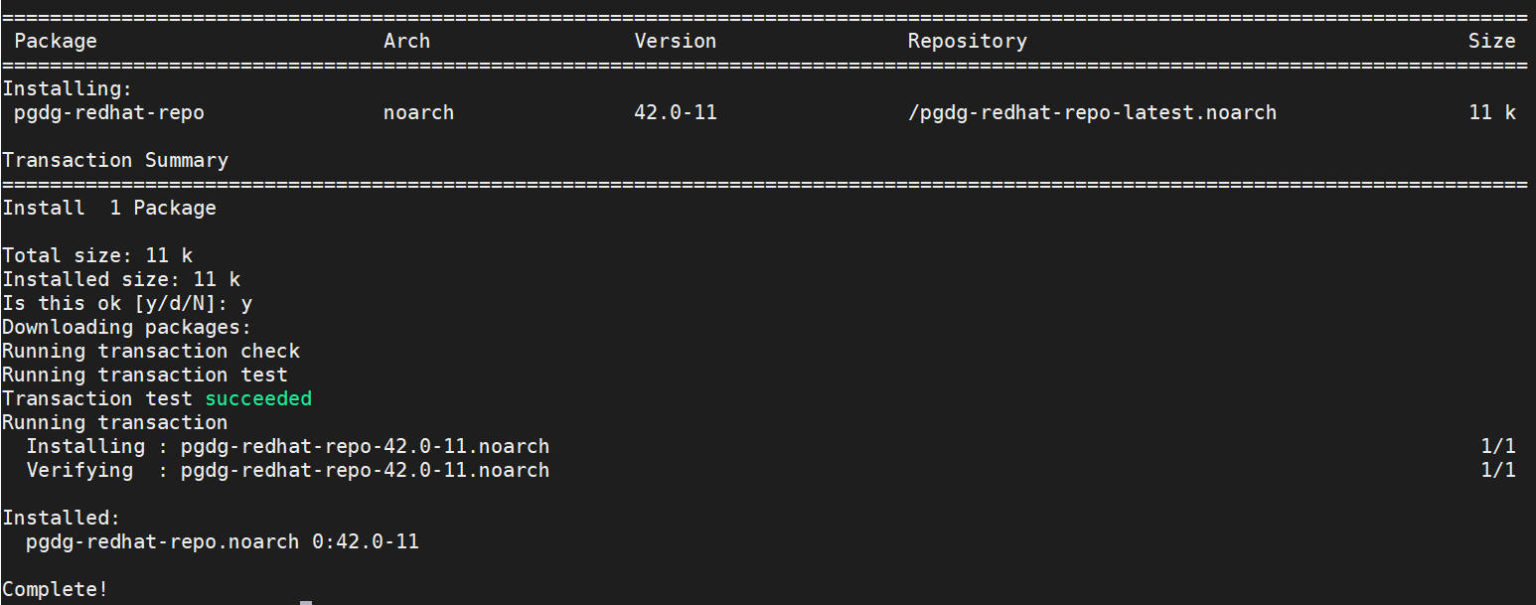
POSTGRESQL YUM REPO INSTALL
The "adminpack" addon, which it calls Server Instrumentation, is part of postgresql-contrib, so you must install that package if you haven't already: sudo apt-get install postgresql-contrib
POSTGRESQL YUM REPO FULL
PgAdmin requires the installation of an add-on for full functionality. Install Server Instrumentation (for PgAdmin) for Postgresql 8.4 or 9.3 To create the first database, which we will call "mydb", simply type: sudo -u postgres createdb mydb Type Control+D to exit the posgreSQL prompt.
POSTGRESQL YUM REPO PASSWORD
The password text will be hidden from the console for security purposes. Set a password for the "postgres" database role using the command: \password postgresĪnd give your password when prompted. In a terminal, type: sudo -u postgres psql postgres As the “postgres” Linux user, we will execute the psql command. To start off, we need to change the PostgreSQL postgres user password we will not be able to access the server otherwise. To install it, type at the command line: sudo apt-get install pgadmin3 PgAdmin III is a handy GUI for PostgreSQL, it is essential to beginners.

This will install the latest version available in your Ubuntu release and the commonly used add-ons for it. To install use the command line and type: sudo apt-get install postgresql postgresql-contrib for version 9.4: chkconfig postgresql-9.4 on Install PostgreSQL on Ubuntu If you want PostgreSQL to start automatically when the OS starts: chkconfig onĮ.g. RHEL 7.1+ and CentOS 7.1+ are a bit different. for version 9.4: /usr/pgsql-9.4/bin/postgresql94-setup initdb If the previous command did not work, try directly calling the setup binary, located in a similar naming scheme: /usr/pgsql-y.x/bin/postgresqlyx-setup initdbĮ.g. for version 9.4: service postgresql-9.4 initdb The first command (only needed once) is to initialize the database in PGDATA. The variable PGDATA is used to reference this directory.įor PostgreSQL version 9.0 and above, the default data directory is: /var/lib/pgsql//data The PostgreSQL data directory contains all of the data files for the database. If you are trying out the above, please post any other relevant findings here.Edit: /etc//CentOS-Base.repo, and sections exclude=postgresql* manually accepting the keys once seem to have worked for me. I will try to see if I can automate accepting the gpg keys.

And even if you do, turn them back on when you have managed to finish installation) ), disable gpgcheckĪnd then run bahmni installation.


It seems like there is some reported signature check error as reported here.The error was: _rpm.error: error reading package headerįatal: : FAILED! => Task path: /opt/bahmni-installer/bahmni-playbooks/roles/postgres/tasks/main.yml: 9Īn exception occurred during task execution. postgres_repo_download_url: Index of /pub/repos/yum/reporpms/EL-7-x86_64/Īfter doing that i rerun the installation and not i am getting another error.The value in default of that is no longer available so you have to change it to this: Previously i got downloading postgresql error and i did the steps you said to change open the file “local” in /opt/bahmni-installer/bahmni-playbooks/group_vars and edit the value of these:


 0 kommentar(er)
0 kommentar(er)
